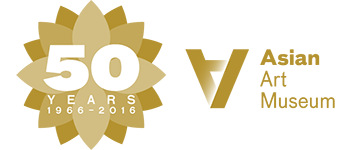“Bojagi” is a general term for all wrapping cloths in Korea. Most bojagi were made with specific people and functions in mind, like when mothers crafted bojagi for their daughters before weddings. Bojagi were viewed more as craft pieces than artwork, and it is only in recent decades that the aesthetic value of bojagi was rediscovered. By sewing together small, used cloth of various shapes and skillfully juxtaposing vibrant colors, the unknown makers of these bojagi created an exciting design akin to modern abstract art.
Depending on its function, design, structure, and user, bojagi can have other names. For example, bojagi made for covering a table is called “sang bo” (“sang” means table, and “bo” is an abbreviation of bojagi). Because the bojagi on display are patchworks of cloth remnants, they are “jogak bo” (“jogak” means small pieces). Different names apply to various patchwork designs, as well as suggest those meant for royalty and for ordinary people.
